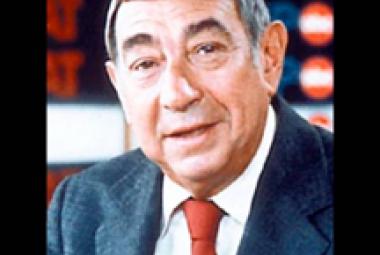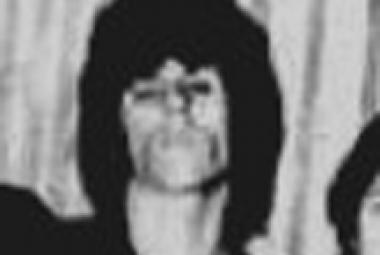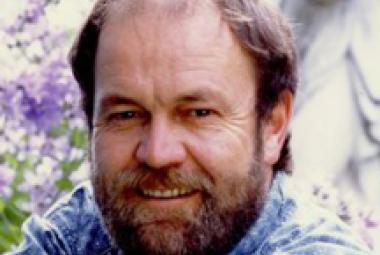Ritchie Valens (born Richard Steven Valenzuela; May 13, 1941 – February 3, 1959) was an American singer, songwriter and guitarist. During this time, he had several hits, most notably “La Bamba”, which he adapted from a Mexican folk song. Valens transformed the song into one with a rock rhythm and beat, and it became a hit in 1958, making Valens a pioneer of the Spanish-speaking rock and roll movement. On February 3, 1959, on what has become known as “The Day the Music Died”, Valens died in a plane crash in Iowa, an accident that also claimed the lives of fellow musicians Buddy Holly and J. P. “The Big Bopper” Richardson, as well as pilot Roger Peterson. Valens was inducted into the Rock and Roll Hall of Fame in 2001. (More from Wikipedia)
At the top of the list of “might have been” in rock and roll has to be the crash on February 3, 1959 in an Iowa cornfield of a small airplane carrying three early rockers to their graves: Buddy Holly, Ritchie Valens, and The Big Bopper. The stories around this tragic event include those about several men who were not on the plane for one reason or another, most famously future country music star Waylon Jennings, who had recently joined Buddy Holly’s band after the break-up of his previous band the Crickets. Also, Dion DiMucci (of Dion and the Belmonts) couldn’t afford the $36 cost, so he also decided not to board the plane.
* * *
Buddy Holly split from both the Crickets and Norman Petty in the fall of 1958 and was thus free to pursue his new musical visions. Unfortunately, he got only a meager settlement when Norman Petty’s books were found to be in hopeless disarray – probably Petty took a big slice of the pie for himself, though there was no way to prove it.
With a new, pregnant wife, and short on money, Buddy Holly signed on for the “Winter Dance Party” package tour of the Midwest. It was during this tour that Holly was killed in the airplane crash in February 1959, along with Ritchie Valens, The Big Bopper. and the pilot Roger Peterson. Buddy Holly was just 22 years old.
(June 2013/1)
* * *
In 1998, an organization called Native American Music Association & Awards was started in order to bring awareness of the contributions of Native Americans to music in all its forms; the Awards have been presented annually since that time. The surprise at taking even a quick glance at their “Did You Know” roster at www.nativeamericanmusicawards.com/halloffame.cfm is the incredible number of stars of popular music who have Native American blood – the tribe or confederation name(s) are given in parentheses here and elsewhere in this post: Elvis Presley (Cherokee), Jimi Hendrix (Cherokee), Hank Williams (Choctaw), Willie Nelson (Cherokee), Ritchie Valens (Yakui), Aaron Neville and the Neville Brothers (Choctaw/Cherokee), Loretta Lynn and her sister Crystal Gayle (Cherokee), Kitty Wells (Cherokee), Wayne Newton (Powhatan), Michael Jackson and the Jacksons (Choctaw/Cherokee), Link Wray (Shawnee), Richie Havens (Blackfoot), Robbie Robertson of the Band (Mohawk), Tina Turner (Navaho), Cher (Cherokee), Rita Coolidge (Cherokee), Eddie Van Halen of Van Halen (Native Hawaiian – Native Americans who are not among those often called Indians), Tori Amos (Cherokee), Toni Tennille of the Captain and Tennille (Cherokee), Billy Ray Cyrus and his daughter Miley Cyrus (Cherokee), Anthony Kiedis of Red Hot Chili Peppers (Mohican), LL Cool J (Cherokee), Beyoncé (Creole), etc.
Tommy Allsup (Cherokee) was a member of Buddy Holly’s new band in 1959; he “lost” a coin flip with Ritchie Valens and was thus not on board the airplane that crashed on the day the music died.
* * *
All three of the men who perished on the day the music died weren’t using their birth names – most obviously in the case of the Big Bopper. As suggested by his manager Bob Keane, Ritchie Valens (born, Anglicized, Richard Steven Valenzuela) got a “t” in his first name and shortened his surname in order to widen his appeal. As to Buddy Holly, “Buddy” could have just been a nickname, but “Holly” also didn’t match up exactly to his birth name Charles Hardin Holley (the dropped “e” was inadvertent, they say).
(August 2013)
* * *
As an example, I have previously written of the origin of the Ritchie Valens hit from 1958, “La Bamba”. The 1987 biopic film about Valens also took the name La Bamba, and “La Bamba” as performed in the film by the Chicano rock band Los Lobos became a Number One hit that year. This song originated in Veracruz (one of the 31 states in Mexico) and was particularly popular at weddings, where the bridge and groom would dance to this music; “La Bamba” might date from as long ago as the 14th Century and is said to have 500 verses. From Wikipedia: “[Ritchie] Valens’ version of ‘La Bamba’ is ranked number 354 on Rolling Stone magazine’s list of the 500 Greatest Songs of All Time. It is the only song on the list sung in a language other than English.”
(February 2015)
* * *















